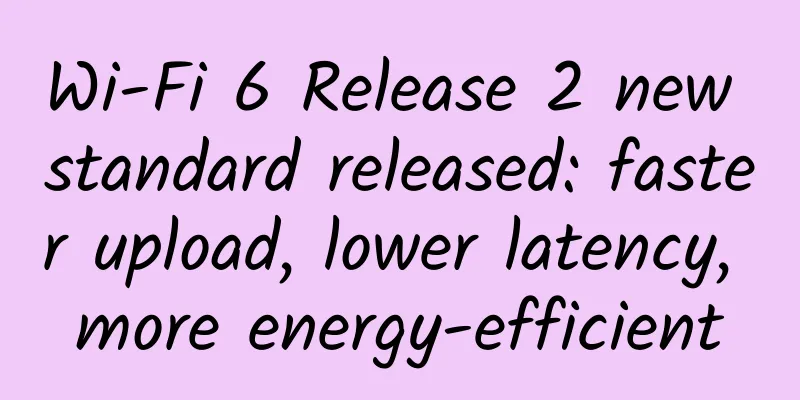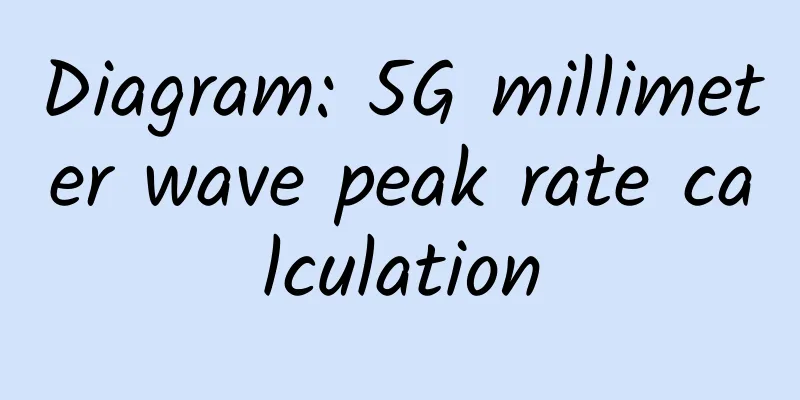Wi-Fi 6 Release 2 new standard released: faster upload, lower latency, more energy-efficient

|
Wi-Fi 6 has made significant progress compared to the old standard. Even in densely populated apartment buildings or offices, Wi-Fi 6 can still bring better performance experience. As for Wi-Fi 6E, it has expanded from 2.4/5GHz to 6GHz band, greatly improving the throughput of the network. What is confusing is that during CES 2022, the Wi-Fi Alliance actually announced the "second version" (Release 2) of the Wi-Fi 6 wireless network standard. It is reported that Wi-Fi 6 Release 2 aims to bring users the "best home Internet experience" through faster uplink, lower latency, and better energy-saving measures. Wi-Fi 6 Release 2 promises even better performance when dealing with more devices and higher traffic density — for example, support for multi-user MIMO uplinks. This feature allows connected devices to upload content concurrently to a wireless access point such as a router, thereby improving the speed and reliability experience when multiple people use it at the same time, and reducing latency in games and video conferencing. In addition, for users who have dozens of smart home devices scattered throughout their homes, Wi-Fi 6 Release 2 also brings improvements in power consumption. The new standard allows compatible devices to enable improved low-power/sleep modes, which is a significant change for battery-powered devices such as smartphones. Finally, the new features of Wi-Fi 6 Release 2 are applicable across all frequency bands (including 2.4/5/6 GHz). Currently, the 2.4GHz frequency band is still the first choice for low-power smart home devices because it is not only low-cost, but also has a more significant advantage in penetration (transmission distance/signal coverage). |
<<: In the digital age, FONE comprehensive budgeting practice sharing in the pharmaceutical industry
>>: A detailed introduction to the difference between WiFi5 and WiFi6 network speeds
Recommend
80VPS: VPS hosting starts at 199 yuan per year, with options for Los Angeles/Hong Kong CN2/Japan CN2/Korea BGP, etc.
We have shared the information of the cluster ser...
Looking back at the shadows that 2G brought to us in those years
[[247708]] Image source: Visual China There is no...
VMISS newly launched Hong Kong BGPV3 node, 20% off, starting from 21 yuan/month, optional CN2 GIA/9929/CMIN2, etc.
VMISS has newly launched the Hong Kong BGP V3 nod...
ThomasHost: US/France/UK/Canada KVM starting at $5/month, supports Windows
ThomasHost domain name was registered in 2012, an...
Don’t understand TCP three-way handshake and four-way wave? Interviewer: Go back and wait for notification!
🌟 Opening: You think you know TCP? Actually... Co...
How 5G will shape the future of construction
5G is an enabler that will deliver new capabiliti...
Maintaining the championship! H3C continues to lead the Chinese enterprise WLAN market in the first half of 2020
Recently, International Data Corporation (IDC) re...
V5.NET: 30% off Korean physical servers in September, monthly payment starts from 436 yuan
V5.NET offers a 30% discount code for the first o...
Can mandatory pre-installation solve the problem? Controversial 5G news: Even if we are not competitive, we cannot act rogue
In the public opinion field, operators are critic...
AkkoCloud: UK CN2 GIA/Germany CN2 GIA/US CN2 GIA high bandwidth VPS quarterly payment starts from 99 yuan
We know that the CN2 GIA line is one of the relat...
Learn how to use IPv6 to surf the Internet in five minutes
1. Introduction to IPv6 As the technical foundati...
The 18th China Enterprise Annual Selection List in 2023 was announced: Haowang AI Ultra-Low Light 3.0 Series won the 2023 China IT Industry Digital Infrastructure Excellent Product Award
In November 2023, the "China Enterprise &quo...
In 2023, 5G and IoT roaming traffic will surge
According to data from international communicatio...
Which router has the best wall penetration effect? Wireless router pit prevention guide
When buying a wireless router, the first thing to...
6 ways to remove duplicate URLs! (with detailed code)
[[341325]] This article is reprinted from the WeC...









